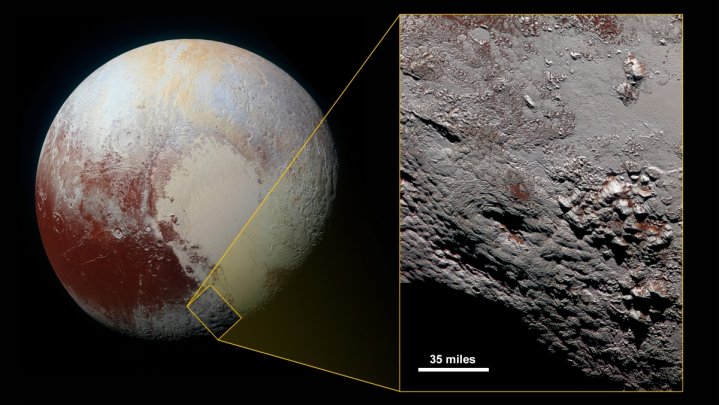
As we all know Pluto has an icy atmosphere and now the scientists believe that a haze particles-controlled cooling mechanism could be responsible for keeping the planet's atmosphere more frigid than expected.
The gas composition of a planet's atmosphere usually determines how much heat gets trapped into it. However, in case of the dwarf planet Pluto, the predicted temperature, based on the composition of its atmosphere, was much higher than the actual measurements taken by NASA's New Horizons spacecraft in 2015.
According to a new study, published in the journal Nature, a novel cooling mechanism could solve the mystery of Pluto's frosty atmosphere.
"It's been a mystery since we first got the temperature data from New Horizons. Pluto is the first planetary body we know of where the atmospheric energy budget is dominated by solid-phase haze particles instead of by gases," said the first author of the study Xi Zhang, who is an assistant professor at University of California, Santa Cruz, US.
The cooling mechanism involves the absorption of heat by the haze particles, which then emit infrared radiation, cooling the atmosphere by radiating energy into space, explains the study. As a result, Pluto gets an atmospheric temperature of about minus 203 degrees Celsius, instead of the predicted minus 173 degrees Celsius.
The haze gets created in the dwarf planet out of chemical reactions that take place in the upper atmosphere, where ultraviolet radiation from the Sun ionizes nitrogen and methane, which then react to form tiny hydrocarbon particles tens of nanometres in diameter.
When these tiny particles submerge through the atmosphere, they stick together in order to shape aggregates that grow larger as they descend. Eventually then end up getting settled onto the surface of the planet.
"We believe these hydrocarbon particles are related to the reddish and brownish stuff seen in images of Pluto's surface," said Zhang in the study.
After the launch of NASA's most powerful James Webb Space Telescope in 2019, the excess infrared radiation from haze particles in Pluto's atmosphere is expected to be detected. This will confirm Zhang and his team's hypothesis, informed the scientist.









